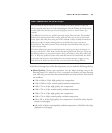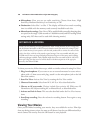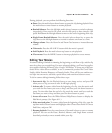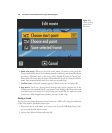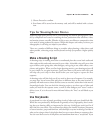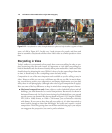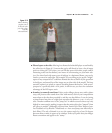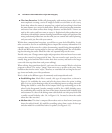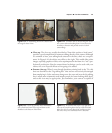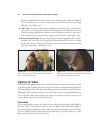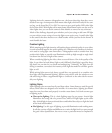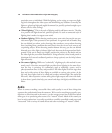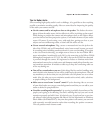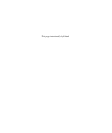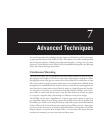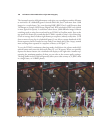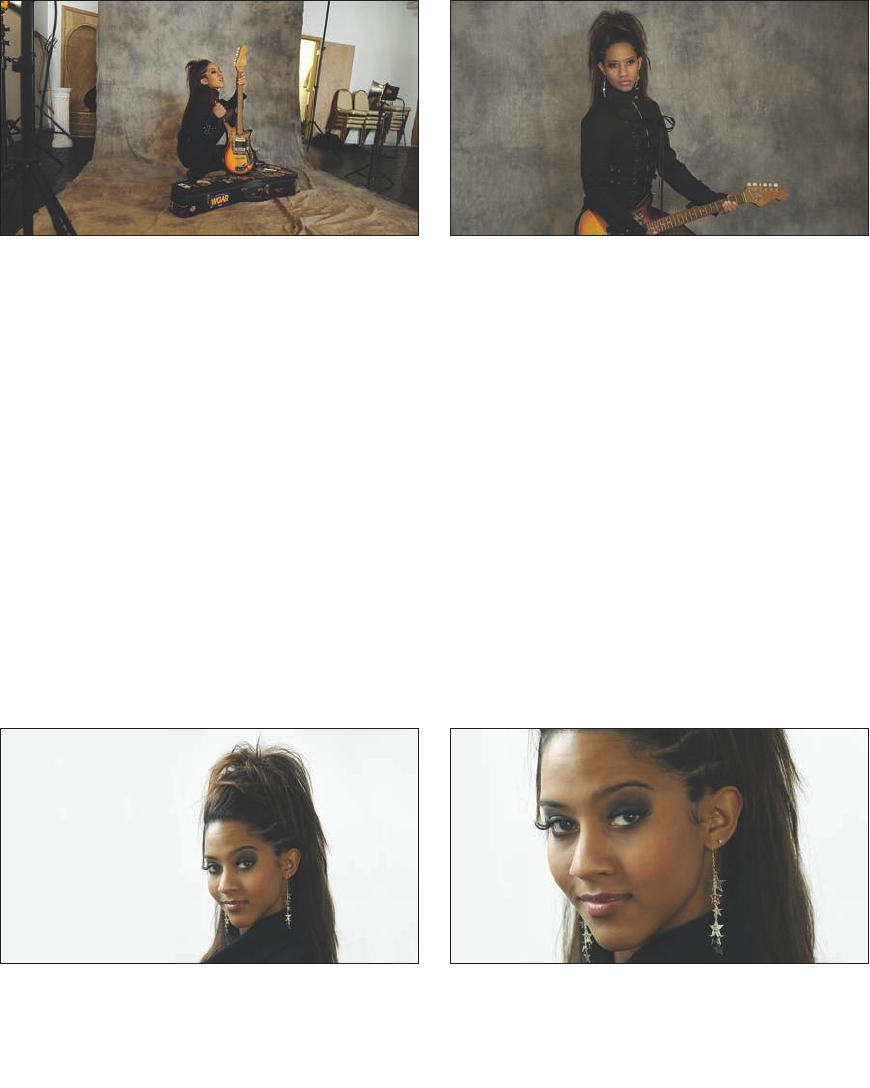
Chapter 6 ■ Live View and D-Movies 173
Figure 6.14 An establishing shot from a distance sets
the stage for closer views.
Figure 6.15 A medium shot is used to bring the viewer
into a scene without shocking them. It can be used to
introduce a character and provide context via their
surroundings.
Figure 6.16 A close up generally shows the full face
with a little head room at the top and down to the
shoulders at the bottom of the frame.
Figure 6.17 An extreme close-up is a very tight shot
that cuts off everything above the top of the head and
below the chin (or even closer!). Be careful using this
shot since many of us look better from a distance!
■ Close-up. The close-up, usually described as “from shirt pocket to head room,”
provides a good composition for someone talking directly to the camera. Although
it’s common to have your talking head centered in the shot, that’s not a require-
ment. In Figure 6.16 the subject was offset to the right. This would allow other
images, especially graphics or titles, to be superimposed in the frame in a “real” (pro-
fessional) production. But the compositional technique can be used with your
videos, too, even if special effects are not going to be added.
■ Extreme close-up. When I went through broadcast training back in the ’70s, this
shot was described as the “big talking face” shot and we were actively discouraged
from employing it. Styles and tastes change over the years and now the big talking
face is much more commonly used (maybe people are better looking these days?)
and so this view may be appropriate. Just remember, your camera is capable of



